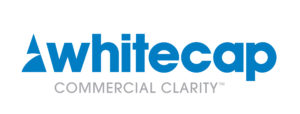Like most businesses, we are continually bombarded with emails, news and statistics relating to research, polls, economic developments and market trends.
Keeping on top of all this information can be a fairly challenging process, so we decided to pick 10 significant indicators and statistics published over the last few weeks and add our own thoughts and reflections.
The highlights below are taken from several sources including the CBI, KPMG, Financial Times and AltFi.
1. Inflation is easing
- CPI inflation fell to 0.9% in the year to October from 1.0% in September, just below the CBI’s expectations for a rise of 1% and below consensus expectations of 1.1%.
- Although the rate has slowed, it remains higher than rates seen for much of the past two years.
2. Input and output prices are increasing
- Input prices (the cost of goods bought by UK manufacturers) rose by 12.2% in the year to October (up from 7.3% in September), which was the fastest pace since November 2011.
- Output price inflation also picked up for the fifth month running (to 2.1%, from 1.3% in September), suggesting that these cost increases are being passed on.
3. SMEs are optimistic about sales growth
- According to the CBI, 25% of small & medium sized enterprise (SME) manufacturers are optimistic about future growth in orders, while 21% said they were less optimistic, giving a balance of +4%.
- 30% said their total new orders were up, while 26% said they were down, giving a balance of +4%.
4. Growth is likely to slow in 2018
- After solid 2.0% GDP growth over 2016, the CBI says it expects growth to slow to 1.3% in 2017 and 1.1% in 2018.
- The CBI also says UK’s economic fundamentals are solid, as evidenced by the recent stronger than expected GDP growth in Q3 (of 0.5%).
5. FinTech funding drops
- Q3’16 saw VC-backed fintech funding drop 17 percent to US$2.4B, while deal activity fell 12 percent to 178 deals. After quarterly fintech investment to VC-backed companies peaked as high as US$5B+ in 2015, investors continue to take a much more cautious approach to fintech investments this year.
6. Retail sales volume on a high
- Retail sales volumes grew at the fastest pace for over a year in the 12 months to November
- The increase in retail sales volumes was driven by the clothing and non-store goods sectors, as well hardware and DIY. Growth in internet sales volumes increased at a healthy pace over the same period, with expectations for growth in the year to December the strongest for two years.
- Sales volumes grew in clothing (+95%), hardware and DIY (+62%) and non-store goods (+49%) among others. Sales volumes for grocers remained flat (0%).
7. Reduction of the trade deficit
- The trade balance deficit narrowed to £12.4 billion from £15.7 billion in Q2.
- Exports increased by 0.7 percent, following a 1 percent drop in the previous period, while imports shrank 1.5 percent following a 1.3 percent gain.
8. Business investment and consumer spending are up post Brexit
- Business investment increased 0.9 per cent in the third quarter of 2016 compared with the previous three months, instead of a consensus prediction of a 1 per cent decline.
9. Changes are afoot in retail banking
- Zopa, the UK’s first peer to peer lender, is planning to launch a digital bank, a development which will mark the first time a peer-to-peer lender has shifted into the mainstream retail banking arena.
- To date Zopa has lent a total of over £1.8 billion to UK consumers, with a little over £600m coming in 2016 alone.
10. The Government is aiming to encourage innovation
- The government announced in the autumn statement that the British Business Bank will invest an additional £400 million in venture capital funds to unlock up to £1 billion of new investment in innovation-focused firms planning to scale up.
So what can we conclude from all of this?
Post Brexit referendum, there are a mix of indicators with both positive and potentially concerning trends. Confidence and retail spending remain high, and new innovative and disruptive business models are developing. However, it is unclear if there are significant lag impacts yet to materialise, which may develop in 2017. Consumer and business confidence are the key ingredients.
This period of uncertainty is likely to remain for the next 12 months as Brexit negotiations unfold, European elections take place and the potential impact of the USA election is felt.
